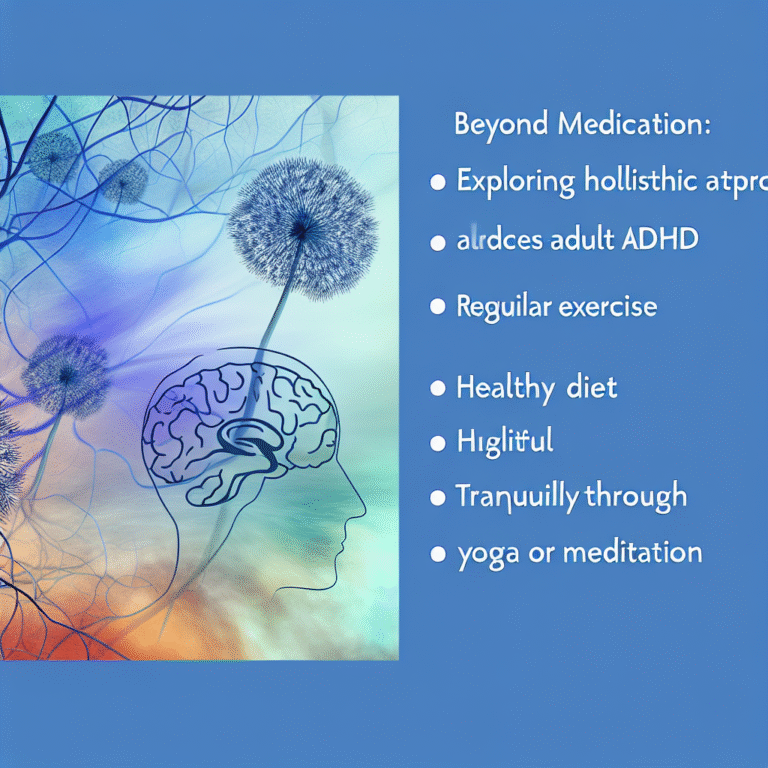
Finding the Right Fit: How to Identify a Trauma-Informed Therapist for Optimal Healing
Introduction
In navigating the complex landscape of mental health, finding the right therapist can feel akin to searching for a needle in a haystack—especially when you’ve experienced trauma. Securing a skilled, trauma-informed therapist is one of the most crucial steps on your healing journey. Finding the Right Fit: How to Identify a Trauma-Informed Therapist, therefore, becomes an essential endeavor, with the potential to shape not just your therapeutic experience but your entire recovery process.
Understanding trauma-informed care isn’t just about labels; it’s about establishing a therapeutic relationship grounded in safety, trust, and understanding of the multifaceted nature of trauma. This article will provide you with unique insights, practical steps, and a comprehensive guide to ensure you find a therapist who not only fits your needs but also empowers you toward healing.
Understanding Trauma-Informed Care
What Is Trauma-Informed Care?
Before diving into how to find the right fit, it’s essential to understand what trauma-informed care (TIC) means. Trauma-informed care incorporates knowledge about the impact of trauma on individuals. It recognizes the signs and symptoms of trauma, actively resists re-traumatization, and prioritizes creating a safe space for clients.
Key Principles of Trauma-Informed Care
- Safety: The therapist creates a physically and emotionally safe environment.
- Trustworthiness: Transparency in decision-making fosters trust.
- Choice: Empowering clients to make decisions about their treatment.
- Collaboration: Partnerships between clients and therapists are prioritized.
- Empowerment: Focus on building strengths and resilience.
The Importance of Finding the Right Fit
When it comes to Finding the Right Fit: How to Identify a Trauma-Informed Therapist, the therapeutic alliance is one of the most significant predictors of treatment success. A therapist knowledgeable in trauma-informed care can help you navigate your feelings, thoughts, and behaviors while validating your experiences. Misalignment in this relationship can lead to frustration, stagnation, or even harm.
To illustrate why this fit matters, let’s take a look at the following case studies:
Case Study 1: Sarah’s Journey with CPTSD
Sarah, a 32-year-old woman with Complex PTSD from childhood abuse, struggled for years to find a therapist who understood her anxiety and distrust. After an unproductive first session with a generic therapist, she found a trauma-informed specialist who employed grounding techniques and validated her feelings. The transformation was profound; Sarah reported feeling heard for the first time and began to unlock the roots of her trauma with targeted support.
Analysis: Sarah’s experience underscores the necessity of connecting with a therapist who specializes in trauma. The right fit not only aids healing but also promotes empowerment.
Case Study 2: Mark’s Recovery from Single Incident Trauma
Mark, a veteran dealing with PTSD, initially sought help from a therapist with a traditional clinical background. He felt his needs weren’t being addressed, which left him frustrated. Eventually, Mark switched to a therapist experienced in trauma-informed care. The difference was noticeable; they worked together on strategies that respected Mark’s unique experiences, such as mindfulness and processing techniques.
Analysis: Mark’s story highlights how a mismatch in therapeutic approaches can result in setbacks. Finding the right fit can rejuvenate the therapeutic journey by personalizing care.
How to Identify a Trauma-Informed Therapist
1. Research Credentials and Specializations
When seeking Finding the Right Fit: How to Identify a Trauma-Informed Therapist, it’s crucial to start with education and qualifications. Look for:
- Licenses: Ensure they are licensed and accredited in their field.
- Specializations: Search for therapists who specialize in trauma and related fields, like PTSD, anxiety, or depression.
- Continuing Education: Look for therapists who have pursued additional certifications in trauma-informed care.
2. Evaluate Therapeutic Approaches
Different therapists utilize varied methodologies. It’s important to engage with one that resonates with you. Research various trauma-informed techniques:
- Cognitive Behavioral Therapy (CBT)
- Eye Movement Desensitization and Reprocessing (EMDR)
- Somatic Experiencing
- Dialectical Behavior Therapy (DBT)
Make sure the therapeutic approach aligns with your personal needs and comfort.
3. Assess Communication Style
Effective communication is paramount. During initial consultations, notice whether the therapist:
- Listens Actively: Do they demonstrate empathy and attentiveness?
- Validates Your Experience: Are they acknowledging your feelings and experiences?
- Encourages Questions: Are they open to discussing your concerns and questions about therapy?
Research indicates that therapists who actively listen and adapt their styles to client needs often facilitate quicker healing.
| Therapeutic Aspect | Helpful Indicators | Red Flags |
|---|---|---|
| Active Listening | Reflective feedback and summarization | Interrupting or dismissive responses |
| Validation | Affirming emotional responses | Minimizing or invalidating experiences |
| Transparency | Sharing treatment plans and intentions | Ambiguity about methods or goals |
| Empowerment | Encouraging independent coping strategies | Over-reliance on therapist for solutions |
4. Use Referrals and Reviews
Consider asking friends, family, or healthcare providers for recommendations. Online platforms that feature reviews or therapist directories can also be valuable resources. Pay attention to client feedback regarding how their therapists address trauma-related issues.
5. Schedule a Consultation
Once you’ve narrowed down your choices, schedule a consultation with potential therapists. Use this as an opportunity to assess whether you feel comfortable with their demeanor, style, and therapeutic focus.
6. Trust Your Instincts
After your consultation, reflect on how you felt. Here are key questions to consider:
- Did you feel safe?
- Were your concerns acknowledged?
- Could you envision engaging in a therapeutic relationship with them?
Trust your instincts; if you feel something is off, it’s completely okay to seek another therapist.
Conclusion
Finding the right fit can be a transformative step in your healing journey. As you embark on your search for a trauma-informed therapist, remember that trauma may shape your history, but it does not define your future. By leveraging the insights provided in this article, you can take proactive steps to Finding the Right Fit: How to Identify a Trauma-Informed Therapist who will guide and support you through healing, growth, and empowerment.
Seek out professionals who embody the principles of trauma-informed care, and don’t hesitate to advocate for yourself in the therapeutic relationship. Your story deserves to be heard, validated, and supported.
FAQs
1. What should I expect in a session with a trauma-informed therapist?
You can expect a safe, empathetic environment where your experiences are validated. The therapist will likely use strategies tailored to your unique history while fostering your empowerment.
2. How do I know if a therapist is trauma-informed?
Look for specific training or certifications in trauma, ask about their experience with trauma clients, and evaluate their approach based on the key principles of trauma-informed care.
3. What if I don’t feel connected with a trauma-informed therapist?
It’s essential to trust your instincts. If you don’t feel connected, it’s completely okay to seek a different therapist.
4. Can I switch therapists commonly?
Yes, you can switch therapists at any point in your healing process. The focus should always be on finding someone who truly aligns with your needs.
5. Why is trauma-informed care important?
Trauma-informed care is vital because it recognizes the pervasive impact of trauma on mental health and focuses on creating a safe and supportive healing environment. The right fit can lead you toward profound healing and positive change.
By adhering to the principles of finding the right fit, you are not just maximizing your therapeutic outcomes but also paving the way for deeper healing and resilience in your life.















